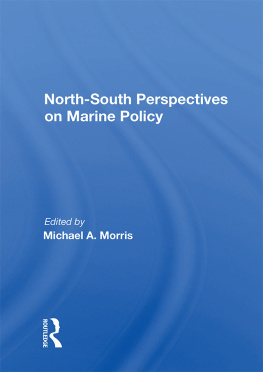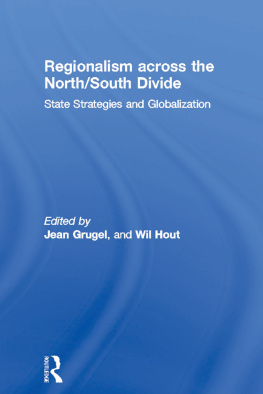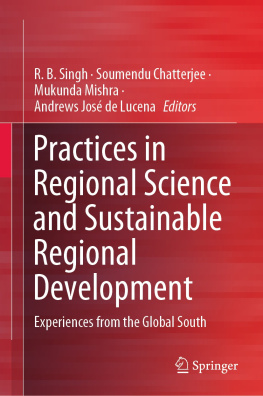First published in 1990 by Paul Chapman Publishing Ltd
This edition first published in 2022
by Routledge
2 Park Square, Milton Park, Abingdon, Oxon OX14 4RN
and by Routledge
605 Third Avenue, New York, NY 10158
Routledge is an imprint of the Taylor & Francis Group, an informa business
1990 Paul N. Balchin
All rights reserved. No part of this book may be reprinted or reproduced or utilised in any form or by any electronic, mechanical, or other means, now known or hereafter invented, including photocopying and recording, or in any information storage or retrieval system, without permission in writing from the publishers.
Trademark notice: Product or corporate names may be trademarks or registered trademarks, and are used only for identification and explanation without intent to infringe.
British Library Cataloguing in Publication Data
A catalogue record for this book is available from the British Library
ISBN: 978-1-03-204163-6 (Set)
ISBN: 978-1-00-319078-3 (Set) (ebk)
ISBN: 978-1-03-204134-6 (Volume 2) (hbk)
ISBN: 978-1-03-204160-5 (Volume 2) (pbk)
ISBN: 978-1-00-319071-4 (Volume 2) (ebk)
Publishers Note
The publisher has gone to great lengths to ensure the quality of this reprint but points out that some imperfections in the original copies may be apparent.
Disclaimer
The publisher has made every effort to trace copyright holders and would welcome correspondence from those they have been unable to trace.
Copyright 1990 Paul Balchin
All rights reserved
Published 1990 by
Paul Chapman Publishing Ltd
144 Liverpool Road
London N1 1LA
No part of this book may be reproduced in any manner whatsoever without the written permission of the publishers, except in the case of brief quotations embodied in critical articles or reviews.
British Library Cataloguing in Publication Data
Balchin, Paul N.
Regional policy in Britain: the north-south divide.
1. Great Britain. Regional economic development. Policies of government, history
I. Title
330.941
ISBN 1 85396 060 8
Typeset by Burns & Smith, Derby
Printed and bound by Butler & Tanner, Frome, Somerset
Prior to any examination of the north-south divide, it is necessary to define the terms north and south as used throughout the book. The Town and Country Planning Association (TCPA) (1987) posited that the boundary between the two parts of Britain runs approximately along a line drawn from the Severn to the Wash, but in addition suggested that the west-Midland counties of Hereford & Worcestershire and Warwickshire, and the east-Midland county of Northamptonshire, should be included in the south, while the south-western counties of Devon and Cornwall could be regarded as being within the north. To be sure, such a division is plausible if it is determined by fine-grained socio-economic data (for example, at the level of the local labour-market), but when undertaking a study of broad interregional disparities, data relating to the region or county may be more appropriate. There is also the question of regional consciousness: it is unlikely, for example, that many people resident in Devon or Cornwall would regard themselves as living in the north.
Partly to avoid the problems of collecting and collating data for split standard regions, recent research into the future of the north-south divide incorporated the whole of the West Midlands and East Midlands into the south (see Cambridge Econometrics and Northern Ireland Economic Research Centre, 1988). Although growth projections suggested that both of the Midlands regions broadly might experience the same rate of growth as the South East, South West and East Anglia to the year 2000, the research ignores current and past similarities between the Midlands and the North West and Yorkshire & Humberside. It would also be very improbable to find many people in, for example, the Potteries of Staffordshire or the Derbyshire coalfield who would claim to be southerners. Nevertheless, with regard to degrees of prosperity, life-style and political preference, the distinction between north and south becomes very blurred. Hackney and Southwark might have more in common with Liverpool or Sunderland than with the outer South East and as such could be regarded as northern whereas Harrogate or Macclesfield might appear to be as affluent as Guildford or Winchester and could thus be assumed to be southern. In this respect, the TCPA (1987, p. 5) rightly suggested that at the end of the day North-South is not so much a geographical concept as a state of mind, brought about by a rapid and catastrophic polarization of the British economy. None of the above definitions, however, fully offer the possibility of intelligibly examining current north-south disparities, or of considering whether or not the north-south divide is widening or narrowing.
In order to use accessible economic and social data to make clear comparisons between the north and the south, the boundary between these two parts of Britain must, first, avoid dissecting standard regions and, second, divide Britain into two parts that are broadly compatible with peoples perception of the terms north and south. To reiterate, it is a nonsense to suggest that whereas Devon is northern, Derbyshire is southern. For these reasons it is assumed throughout this book that the fault line of [Britain] ... remains, as it has always been, a boundary drawn between the ).

Figure 1.1 The north-south division of Britain
It is remarkable that, taking the boundary as defined above, Britain, in the late twentieth century, divides into two contrasting parts in which economic and social factors show a highly consistent pattern and are mutually reinforcing in their effects (Martin, 1988, p. 401). In the north there are the decaying and comparatively low-income cities of the Industrial Revolution previously dependent upon coal, textiles, metal industries and mechanical engineering, and in the south there is a concentration of economic and political power in the capital and an array of affluent new towns and country towns geared to the growth of high-technology industry and decentralized services.
While undoubtedly the north became disproportionately disadvantaged by the depression of the 1930s, most of the northern regions have always been the poorest parts of Britain. Even during the Industrial Revolution and its immediate aftermath when the staple industries of the north (coal, cotton textiles and shipbuilding) achieved their highest outputs both the level of unemployment and incomes per capita in the north generally compared unfavourably with those in the south. While employers in many parts of the north were dependent both upon labour-intensive methods of production and unstable export markets, industrial activity in the south was geared more to the home market, and London dominated the nations mercantile activity, banking and finance. Research has recently shown that the highest rates of unemployment in Victorian and Edwardian Britain were primarily found in northern Britain rather than in the south (Southall, 1988); and it has also been revealed that, whereas the northern regions generally had below-average incomes per capita in, for example, 1859-69, 1879-80 and 1911-12 (with Yorkshire & Humberside, the North, Scotland and Wales having the lowest per-capita incomes in these periods), the South East had the highest per-capita incomes throughout the late-nineteenth/early twentieth century, with East Anglia (in the period 1859-69 and 1879-80) and the South West (in the period 1911-12) similarly having above-average per-capita incomes (Lee, 1986; Martin, 1988). Clearly, the instability of the industrial north and the comparatively advantageous position of the southern economy were established features of the British space economy well before the inter-war period (Martin, 1988, p. 394). A revaluation of the pound in 1924, however, and the world depression of the early 1930s, hastened the collapse of the industries of the north, left the south largely unscathed and consolidated the north-south divide.









